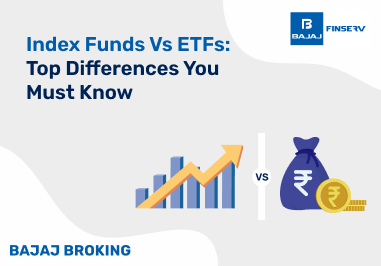BAJAJ BROKING
Shri Ahimsa Naturals IPO is Open!
Open a Free Demat Account
Trade Now, Pay Later with up to 4x
Track Market Movers Instantly
Difference Between Equity and Preference Shares
Are you an investor looking to park your funds in a good company? If yes, you must have come across the terms, equity shares, and preference shares. Both these types of shares are offered by companies to raise capital and they come with certain benefits and risks. While equity shares form the backbone of any business, preference shares provide guaranteed returns and attractive dividends. Knowing the difference between equity and preference shares is important when investing as they offer different types of benefits. Preference shareholders typically have a priority claim on dividends from the company but may not necessarily have voting rights. Understanding what kind of return each share type offers can help you make more informed decisions about your investments. In this blog post, we will explain the key differences between these two types of shares so that you can make an informed investment decision.
Equity shares, or common stock, are ownership interests that provide voting rights and entitlement to any dividend payments. As an equity shareholder, you will reap any returns generated by the company as its value increases over time. These non-redeemable investments serve as reliable long-term financing sources since shareholders can claim the residual share during liquidation. Lastly, management sets the dividend rate applicable to such investments – making them an attractive proposition for investors!
Preference shares provide investors with a higher standing than common shareholders, both in terms of dividends and liquidation rights. When it comes to dividend payments, preference shareholders are owed a fixed income before common shareholders receive anything – additionally, when the company faces dissolution, preference stocks will be settled ahead of common shareholder stakes. However, holders of preference shares do not possess certain voting rights that common shareholders do. That being said, while they don’t have access to significant decisions within the company, they are guaranteed preferential treatment in the event of company failure or profit distribution.
Knowing the difference between equity and preference shares is important when investing as they offer different types of benefits.
| Parameters | Equity Shares | Preference Shares |
| Definition | Equity shareholders are owners in a company. | Preference shareholders have preferential treatment when it comes to dividends and liquidation |
| Dividends payouts | Entitled to the highest dividend payments & capital gains | Entitled to a fixed rate of returns & no extra dividends |
| Voting Rights | Voted on decisions made by the company board | Don’t normally have voting rights |
| Level of Risk | More risk, but also more potential reward | Less risk, with less potential reward |
| Capital Payment | capital payment for equity shares is determined by the share price and the number of shares owned | preference shareholders typically receive a fixed-rate dividend payment |
| Rights of shareholders | Have the right to vote in shareholder meetings and elect company directors | Passive role. Thus, do not normally possess these rights |
| Liquidation | Not entitled to any repayment from the company’s assets | Preferential treatment in terms of repayment. |
| Types | – Ordinary shares | – Cumulative dividend – Noncumulative dividend – Convertible preference shares – Redeemable preference shares |
| Arrears of Dividend | Do not guarantee any fixed rate of return or entitlement | Guaranteed a fixed rate of return as well as access to pending payments that may have been due since the last company dividend payment. |
It is important to note that the rules and regulations surrounding preference shares may vary from one country or region to another, so investors should be aware of these differences when making decisions about their portfolios. Additionally, investors should always ensure they fully understand the terms and conditions of any issue of equity or preference shares before investing.
Conclusion
Investment in equity and preference shares can be a smart way of diversifying portfolios and creating long-term wealth. By understanding the differences between these two types of shares, investors can choose which type is right for them based on their desired return, risk profile, and objectives. With the right knowledge and approach, investors can make smarter decisions when it comes to investing in equity or preference shares.
Share this article:
Read More Blogs
Our Secure Trading Platforms
Level up your stock market experience: Download the Bajaj Broking App for effortless investing and trading





_slider.jpg)







